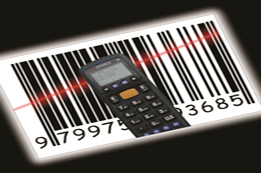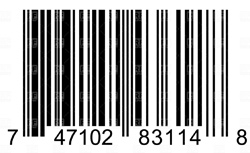WITH BARCODE SUPPORT
Automatic identification systems are the most important factors that increase business efficiency and are important in the control and monitoring of the systems. For a business to achieve timely and accurate information, systems that provide fast data entry for the industries with very large volume of data entry such as stock control, inventory control are also needed. Precise, detailed and fast flow of the data has become mandatory in almost every sector.

Barcode is one of the most effective automatic identification technologies. The main benefits of barcode technology are;
- Warehouse processes, such as stock control,
- Order records,
- Getting better and more reliable information about sales.
Line barcodes with various encoding formats having international standards are composed of symbols that make the codable knowledge to be detected by barcode reader devices and readable by computers and similar devices.
Barcode is an automatic identification technology. Barcode allows the data expressed in certain forms to be collected accurately and quickly.
 First part: or shows the symbol code. Each country has its unique code.
First part: or shows the symbol code. Each country has its unique code.
Second part: shows the company code. It is the 4 digits that come after the country code. This code is obtained from Property Numbering Center of the TOBB (Turkish Union of Chambers and Commodity Exchanges).
Third part: It is the 5 digits that come after the country code. It is the product code that identifies the product.
Fourth part: It is the last figure. It is the control code. This code is the controlling figure that is calculated by a certain formula to prevent other numbers to be read incorrectly
Benefits of the barcode system:
- Accuracy
- Speed
- Cost
- Usefulness
BARCODE TYPES
There are many different line barcode types existing and being used. The line barcode types which are being used mostly and heavily are;
- EAN (European Article Number - European Product Code) / UPC ( (Universal Product Code) barcodes
- Interleaved 2 of 5 (ITF)
- Code 39
UPC SYSTEM
It is being used in U.S.A and Canada. There are 10 characters in the system substantially. However, it is also possible to use more characters. The barcode is composed of numeric parts that are readable by machine and the consumer.
The entire system is composed of 10 basic characters (the 5 characters from left up to center line are the manufacturer code, next 5 characters after the center line are the product code) and the control characters. Both codes are issued by the National Numbers Centre.
EAN SYSTEM
In European countries the EAN system has been developed. The name of "European Commodity Numbering Association" founded in Belgium in 1977 has been renamed as "International Commodity Numbering Association" as the countries outside of the European have become members of the union but the short name EAN has not been replaced.
Turkey became a member in 1988. EAN system is used in numbering of almost all types of goods. In the EAN system, the number is being given regardless of the type of goods. In this respect, it has an ease of use and flexibility.
The only difference between EAN and UPC is the number of digits. 
EAN-13 is composed of 13 digits divided into 4 groups.
EAN-8 is composed of 8 digits divided into 3 groups.